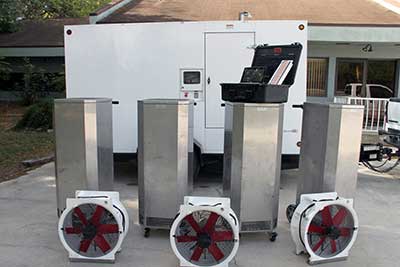Some Of Bed Bug Services
Table of ContentsThings about Bed Bug ServicesOur Bed Bug Services IdeasFascination About Bed Bug Services
High-temperature treatment is one of the most effective ways for eradicating bed bugs from apartments, condos, and offices. Unlike insecticide treatments that work only on direct contact, thermal methods penetrates all hiding spots, destroying bugs at every stage in a single session. Learning the process behind heat treatment ensures residents make confident choices.The science behind heat treatment is simple yet powerful. Bed bugs cannot survive when the environment reaches extreme heat. Studies show that temperatures around 122°F (50°C) can kill bed bugs. To guarantee all insects die, professionals usually heat the area to 135°F–145°F so that hidden spots reach lethal levels. Maintaining high temperatures long enough makes sure that every hiding place is affected.

All About Bed Bug Services
When heaters are deployed, they bring in industrial-grade heaters along with air movers to move heat into hidden areas. Rather than turning up heaters to maximum, the temperature is raised slowly, avoiding potential warping and reduces the chance of bed bugs escaping to cooler spots.

After the treatment, the space begins cooling and the area is allowed to cool gradually. Many companies check the property for remaining bed bugs and provide detailed reports showing temperatures reached, duration, and recommendations. This reporting offers peace of mind and demonstrates a thorough job.
Heat treatment is preferred for many infestations. It does not involve pesticides, which is perfect for households avoiding chemicals. It is often fast and efficient, allowing residents look these up to return home quickly - Bed Bug Services. Heat also eliminates bugs even in unseen spaces. Unlike some methods, it kills all stages of bed bugs at once, ensuring comprehensive control
Not known Facts About Bed Bug Services
While highly effective, heat treatment has some limitations. It can helpful hints be expensive for large properties, particularly in multi-unit buildings. Reinfestation is Bonuses possible if people bring them in again, so ongoing monitoring is important. Certain items may warp or melt under heat, and in multi-unit housing, follow-up monitoring is critical.
Many professionals follow heat with inspections and preventive measures to catch any stragglers. Follow-up devices and careful inspections can provide additional protection.
After treatment, long-term prevention is key. Regular inspections of living spaces help prevent new infestations. Mattress and box spring encasements add protection, while reducing clutter can help maintain control. Being mindful of used items is also important to prevent bed bugs from returning.
Heat treatment offers a highly effective solution for moderate to severe bed bug infestations. It provides a chemical-free, comprehensive approach that eliminates bed bugs in a single session. When performed by trained professionals, it ensures complete eradication without the lingering effects of chemicals, allowing families to live safely again.